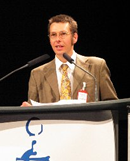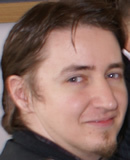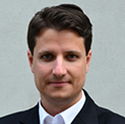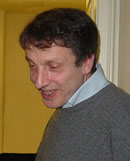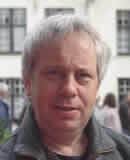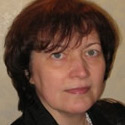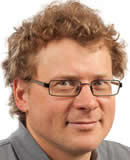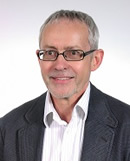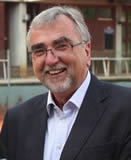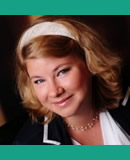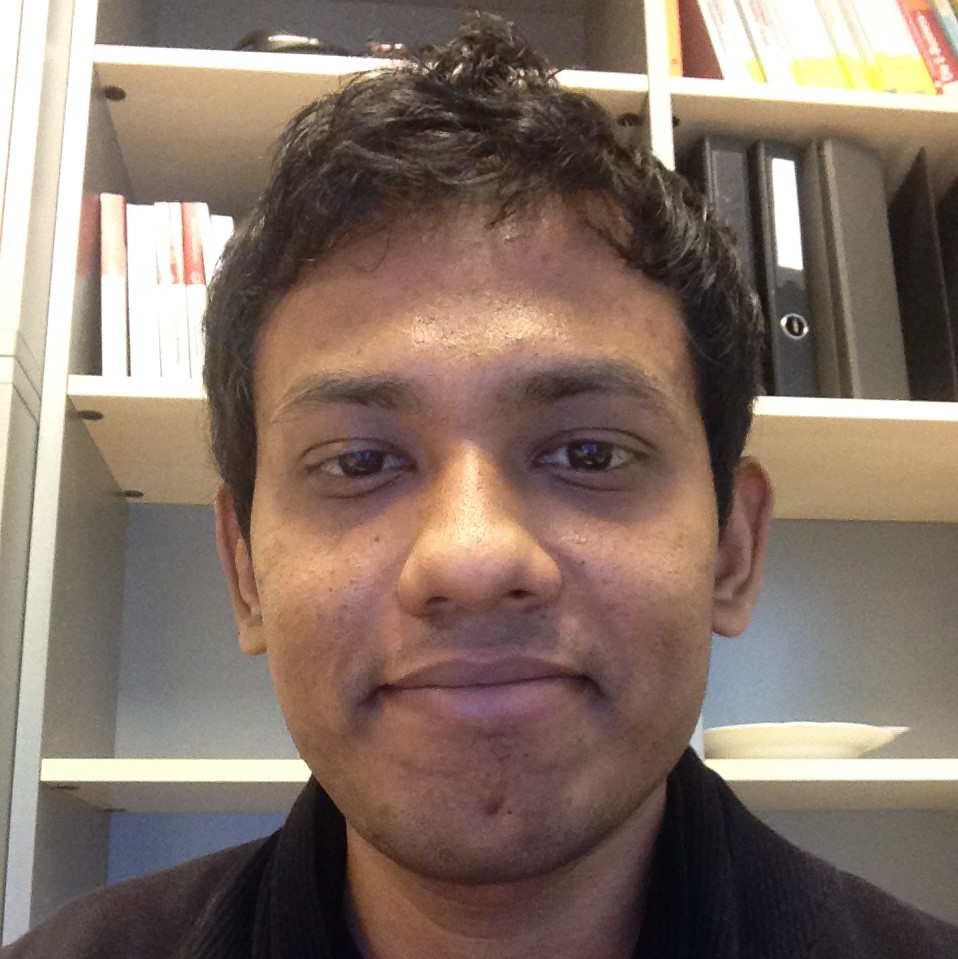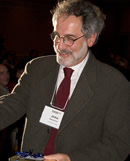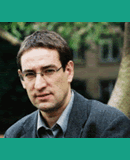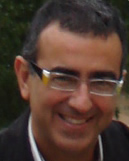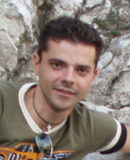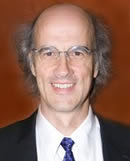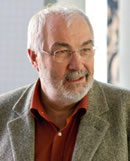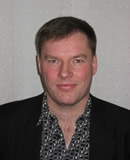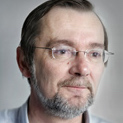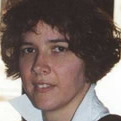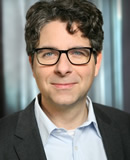Abstracts
Have a look at the lecture abstracts of this year's edition and explore the profiles of the presenters!
All times are UTC+2 (Vienna, CEST - Central European Summertime).
This contribution to NEMO 2015 is not oriented on innovations or research works concerning the theory and implementation of enterprise modelling tools and methodology. Complementary, it is focusing on an application area, which induce specific requirements and needs for such methodologies. Industrial Product Service Systems (PSS) are a recent industrial concept offering strong opportunities both for business innovation and sustainability improvement. Coupling or even integrating industrial production and service delivering poses many innovative challenges for the manufacturing industry at the technological, organizational and even human level. In the recent years, many international projects have contributed to important scientific advances in the field. The lecture will first give a synthetic insight on Product Service Systems (PSS), to make possible for the audience to understand the key concepts of PSS and key industrial needs to manage an economical transition towards this new form of industrial economy. Then, the lecture will underline specific research orientations directly linked to the needs of developing enterprise modelling and engineering solutions, to support the configuration, deployment, and life cycle management of Product Service Systems and value creation chains. The practical part of the lecture will propose to the audience the experimentation of a customized modelling tool, dedicated to the engineering and evaluation of PSS scenarios.
Lecture at NEMO2015
Date/Time: Thursday, July 23, 2015 at 09:00 UTC+2/CEST
The lecture introduces “conceptual model-aware” information systems as a vision overarching both traditional “data-aware” information systems and the emerging paradigm of “process-aware” information systems (PAISs). To this aim, the vision employs metamodelling as an enabler for domain-specific diagrammatic modelling, which enriches the semantics of back-end information, therefore extending the query possibilities at run-time. Linked Data is employed here as integration technology for model repositories, thus establishing a convergence between the paradigm of process-awareness and the Web of Data. The lecture generalizes ideas that emerged from experiences within the ComVantage EU research project. In order to facilitate understandability, a demonstrative proof-of-concept of minimal complexity illustrates the vision.
Lecture at NEMO2015
Date/Time: Tuesday, July 28, 2015 at 14:00 UTC+2/CEST
Cloud computing is a major trend in the ICT industry. The wide spectrum of available Clouds, such as those offered by Microsoft, Google, Amazon, HP, AT&T, and IBM, just to mention big players, provides a vibrant technical environment, where even small and medium enterprises (SMEs) use cheap and flexible services creating innovative solutions and evolving their existing service offer. Despite this richness of environments, Cloud business models and technologies are characterized by critical issues, such as the heterogeneity between vendor technologies and the resulting lack of interoperability between Clouds. This implies that developing and operating applications on the Cloud can show some difficulties and that migrating the application from one Cloud to another may require some re-development effort. The purpose of this course/presentation is to show how model-driven engineering can be applied both to design and operation (DevOps) of cloud applications and can allow applications to exploit different clouds without requiring significant effort. Moreover, we will show how, thanks to models, it is possible to analyze and QoS characteristics of applications and keep them under control both at design time and at runtime.
Lecture at NEMO2015
Date/Time: Wednesday, July 22, 2015 at 11:00 UTC+2/CEST
In this lecture it will be shown how concepts of meta modelling can be applied in two core areas of modern information systems. For this purpose the lecture will start with a brief introduction into the theoretical foundations of meta modelling and the corresponding realization of modelling methods on the ADOxx meta modelling platform. Subsequently, the application areas of business process management and ontologies will be introduced. Thereby it will be particularly focused on the challenges and opportunities of adapting existing modelling concepts in these areas to the personal needs of users, organizations, as well as technical processing functionalities in the form of algorithms. As a solution to these challenges the introduced meta modelling concepts will be applied. Furthermore, it will be discussed how this approach permits to design and implement innovative software applications that bring together the technical opportunities of semantic technologies and established business process management methodologies. The concepts and applications will be illustrated using case studies from research and industry projects. In particular it will be reverted to concepts and implementations from the SeMFIS research project conducted at Stanford University that is hosted at www.omilab.org.
Lecture at NEMO2015
Date/Time: Wednesday, July 22, 2015 at 14:00 UTC+2/CEST
In recent years, the development of domain-specific modelling languages (DSML) has gained remarkable attention. This is for good reasons: A DSML incorporates concepts that represent domain-level knowledge. Hence, systems analysts are not forced to reconstruct these concepts from scratch. At the same time, DSML contribute to model integrity, because they include already constraints that would otherwise to be added manually. Even though there has been a considerable amount of research on developing and using domain-specific modelling languages, there is still lack of comprehensive methods to guide the design of these languages. In this course the participants will learn to use a method for designing DSML. It includes heuristics to analyse requirements and meta-modelling guidelines that support frequent design decisions. The use of the method will be illustrated by the development of an example DSML.
Lecture at NEMO2015
Date/Time: Monday, July 27, 2015 at 14:00 UTC+2/CEST
Business Process Modelling (BPM) and Business Intelligence (BI) are two important areas in business informatics, which are treated, often rather separated from each other. Looking at the literature and the activities in the two areas shows that process modelling takes a look at the business from a more production and organizational oriented view, whereas business intelligence activities emphasize more the role of the customer in the business process. In this lecture we want to take a unified view onto these two approaches and show how BPM and BI support each other. For demonstration we use the activities of data understanding and data provisioning which are at the beginning of any BI activity. Due to the abundance of data on the Internet integration of traditional data sources and big data is a challenging task. We present a process model for data integration and show how this model can be realized using the ADOxx platform. The basic idea of the model is simultaneous processing of the data workflow and the associated workflow of the metadata which describe the data processing activities. Such a model supports better understanding of the data and extends traditional methods for accessing data quality.
Lecture at NEMO2015
Date/Time: Thursday, July 23, 2015 at 16:00 UTC+2/CEST
We define Japanese creative services and discuss how they have been sustained successfully and its application to global service enhancement. There are many “Shinise” (shops of long standing) service companies in Japan that are quite unique compared to the companies located in any other geographical region. They typically have anecdotal values based on nature and seasons, various types of culture, histories, and/or lifestyles. Several Japanese creative services are expanding their activities toward global markets. We explain the mechanisms of the sustainability and scalability of advanced cases of Japanese Creative Services. A key aspect of the mechanism is a communication between service providers and consumers based on sharing/interpreting/utilizing of tacit context in a community. For analysing the key aspect, we propose the combined approach of sociology/anthropology, psychology, engineering and design thinking. We developed a meta-modelling platform for handling the combined analysis of the Japanese Creative Services. We believe that this kind of approach will contribute to creating new values within the field of service science and for value-added global services.
Lecture at NEMO2015
Date/Time: Wednesday, July 29, 2015 at 11:00 UTC+2/CEST
Management research has long suggested that the development of the firm will follow a similar pattern of growth from a small company with a focused product or process to a large enterprise with technologically-related products and/or vertically-integrated processes. Within a single country or across national economies, the original variations in terms of focus and size of companies may have exhibited for societal non-economics reasons, but ultimately the market efficiency and effectiveness of related product portfolio and vertical integration eventually force most enterprises to adapt to the single trajectory of corporate evolution. Originally proposed by Alfred D. Chandler in the 1960s, this “convergence” model based on the experiences of U.S. large industrial enterprises has appealed to management scholars thanks to the continuous hegemony of American economy and its large industrial enterprises that play the major role within it. Ironically, however, as market liberalization progressed in the global economy since the 1980s, two different models of corporate evolution emerged to challenge the efficiency-driven model of firm growth. The first of the two models is the development of business groups with unrelated product portfolio mainly, yet not exclusively, in emerging markets. Management scholars have conventionally discarded this form of business enterprises as an inherently-inefficient organization that can survive only in the immature economic environment of emerging markets. As some of those economies have got to belong to the high-income OECD group such as South Korea, however, the nation’s flagship firms lime Samsung and LG still hold on to their original business group form. The second development that has contested the supremacy of the Chandlerian evolutionary model has come from the large enterprises that extensively adopted a network-type organizational structure. Rather than relying on intra-firm operations, enterprises today actively utilize extra-firm resources such as open innovation for R&D, OEM for production and strategic alliances for operational coordination. Through these reform measures today’s corporations aim to maximize strategic effectiveness and operational efficiency. This presentation aims to give a systematic review of the ongoing changes of corporate strategy and organizational structure and their economic reasoning and managerial implications.
Lecture at NEMO2015
Date/Time: Friday, July 24, 2015 at 11:00 UTC+2/CEST

University of Applied Sciences and Arts Northwestern Switzerland FHNW, Switzerland
Case management is the management of long-lived collaborative processes that require knowledge, information, and resources to achieve an objective or goal. The path of execution cannot be predefined. Human judgment is required in determining how to proceed. The OMG recently developed a new standard: Case Management Modelling and Notation (CMMN). The lecture will give an introduction into this modelling language and shows, how it can be integrated with Business Process Model and Notation (BPMN). Decision-making is a type of knowledge-intensive tasks which occurs in both cases and structured processes. Decision-aware business processes separate decision logic from process flow, making process models simpler and easier to modify.
Lecture at NEMO2015
Date/Time: Thursday, July 23, 2015 at 14:00 UTC+2/CEST
Enterprise models span all levels and perspectives of objects relevant to an enterprise, such as goal models, process models, data models, product models, network structures, interfaces, and so forth. Such models must be kept consistent with each other. The lecture proposes a constraint language that allows to formulate rules at an abstraction level that facilitates their automated re-use. We also discuss the mechanism that makes the elements of heterogeneous modeling languages related to each other and how we can use this view to plan the links between such modeling languages. The technique is applied to existing enterprise modeling approaches such as 4EM and Archimate to demonstrate the required effort. Practical examples and exercises use the ConceptBase metamodeling system.
Lecture at NEMO2015
Date/Time: Tuesday, July 28, 2015 at 09:00 UTC+2/CEST
As the paradigm of Enterprise modeling originally envisioned, a hybridization of modeling approaches is needed in order to cover the multiple facets of a business view, its context and requirements for different types of resources - including IT services and infrastructure. The “modeling method framework” establishes key building blocks - i.e. the modeling language, the modeling procedure and mechanisms/algorithms - to enable the required hybrid modeling and to increase the value of models beyond their traditional functions. As the importance of Next Generation Enterprise Modeling in the age of the Internet of Things, Industry 4.0, Industrial 3-D printing etc.,increases, new modeling capabilities, semantically enriched design concepts and adapted operational functionality must satisfy evolving needs, in order to successfully manage not only the transformation in the digital Enterprise stage, but also the adaptation and extension of existing services.In this context, the foundations of a conceptual-model-awareness approach for next generation Enterprise Information Systems will be presented. This novel approach makes use of semantic networks to extend model-awareness towards arbitrary types of models that are developed for specialized communities aiming for domain-specificity (or even case-specificity) in their modeling language, therefore favoring productivity at the expense of reusability across domains. The technological space for capturing and bridging knowledge through model semantics is primarily based on diagrammatic models. Two categories of models are employed in this context: (1) Models of Concepts for describing a common understanding of a domain through its concepts and relations; (2) Models that use Concepts typically domain-specific models based on some already established understanding of the domain. The hereby introduced life cycle of Agile Modeling Method Engineering -AMME- aims to apply the principle of agility established in Software Engineering (e.g., evolutionary development, flexible response to change) to the practice of Modeling Method Engineering. The main assumption is that a modeling method may evolve iteratively based on changing modeling requirements and > feedback loops. Within the context of AMME, a full methodological approach is established by the OMiLab Laboratory (http://www.omilab.org), with the life cycle encompassing five phases: (1) create, (2) design, (3) formalize, (4), develop and (5) deploy/validate. The approach is supported, in its fast prototyping stage, by the meta modeling domain-specific language MM-DSL and the meta-modeling platform ADOxx (http://www.adoxx.org).
Lecture at NEMO2015
Date/Time: Monday, July 20, 2015 at 14:00 UTC+2/CEST
Enterprise modelling has been defined as the ‘art of externalising enterprise knowledge’. In addition, analysis of enterprise models has been used to gain knowledge about the enterprise through simulation or deduction, often by comparing a model of the current state and a model of a future, potentially better state. Examples of analysis made possible using enterprise models include strategic planning, process optimisation, change management and business/IT alignment. Traditional approaches to enterprise modelling approaches rely on “blueprint thinking” that focuses on the formal structure and organisation of the enterprise, with business processes being the fundamental components of the enterprise operation. Such approaches generally assume enterprises as deterministic, top-down managed entities, with a well defined group of clients, a set of services or products provided to these clients, processes to develop and maintain products or services, and suppliers providing the input to processes. However, the prevalence and volatility of digital enterprises shifts enterprise modelling towards a more dynamic enterprise configuration, to embrace the idea of dynamic adaptation according to the internal and external influences that constantly (re-)shape the business environment. To this end, enterprise modelling research has adopted model driven development methods and service oriented architectures originating from the software development domain, as a means to achieve flexible service delivery and the notion of dynamic capability from the strategic management domain in order to address adaptation to the dynamic business context. This talk will outline emergent trends in the field, introduce a conceptual framework for capability driven development of enterprise knowledge and discuss how this can be used to enable the design of capabilities and services using examples from various application areas.
Lecture at NEMO2015
Date/Time: Wednesday, July 22, 2015 at 09:00 UTC+2/CEST
Current business process modeling approaches are well appropriate for showing the sequence of activities. They are less suitable for reflecting information flows. However, to reason about information security, the reflection of information flows is an essential instrument for analyzing the way how information shall be organized with respect to the security. While the security refers not only to the technical devices and access rights in databases, also the enterprise models that reflect organizational structure (including particular individuals), technical architecture, information architecture, and relationships between aforementioned models are useful to identify and use different patterns that reflect the need for caring for security and the corresponding methods of establishing the requested level of security. Several security patterns prescribed by SREBP approach will be presented and analyzed in the context of enterprise models.
Lecture at NEMO2015
Date/Time: Friday, July 31, 2015 at 11:00 UTC+2/CEST
We have for many years worked with SEQUAL, a framework for understanding the quality of models and modelling languages, which covers all main aspects relative to quality of models. SEQUAL has three unique properties compared to other frameworks for quality of models: It distinguishes between quality characteristics (goals) and means to potentially achieve these goals by separating what you are trying to achieve from how to achieve it ; It is closely linked to linguistic and semiotic concepts. In particular, the core of the framework including the discussion on syntax, semantics, and pragmatics is parallel to the use of these terms in the semiotic theory of Morris. A term such a ‘quality’ is applicable on all semiotic levels. We include physical, empirical, syntactical, semantical, pragmatic, social, and deontic quality in the work on SEQUAL ; It is based on a constructivistic world-view, recognizing that models are usually created as part of a dialogue between those involved in modelling, whose knowledge of the modelling domain changes as modelling takes place. We will in the talk present the general SEQUAL framework and how it can be specialized for investigating the quality of enterprise model. Starting from a generic framework means that we can reuse a number of aspects being of general relevance for modelling, and thus better ground the proposals, both for quality of enterprise models, modelling languages, and accompanying approaches, methods and tools to achieve and keep models of high quality.
Lecture at NEMO2015
Date/Time: Thursday, July 30, 2015 at 11:00 UTC+2/CEST
Generally enterprise modelling for business process has not significantly dealt with process’ mobility with temporal requirements over geographical space. For example, it will be one of the mobility issues that the mobility of actors in business process should be geographically specified and verified with deadlines in a target business environment. Among formal methods, process algebra is the most suitable method for modelling the mobility over such distributed environments, due to the notion of the concurrency, distribution, movement, interaction and the control of processes, as well as their temporality. The most well-known process algebras are CCS, π-Calculus, Mobile Ambient, ACSR, etc. However they have limitations to represent the real aspects of the mobility due to the lack of features to represent different types of mobility, based on different aspect of autonomy, synchrony, priority, temporality, etc. In the lecture, a new algebra, called δ-Calculus, will be introduced to show how the algebra with the full features can be used to model the mobility. The appropriateness of the calculus will be demonstrated in a tool, called SAVE, which has been developed on ADOxx meta-modelling platform. At the end, the detailed architecture of the tool will be presented to show how effectively and efficiently the tool has been developed by using the basic facilities of ADOxx.
Lecture at NEMO2015
Date/Time: Wednesday, July 29, 2015 at 16:00 UTC+2/CEST
Traditional software engineering and management struggles to properly address systems complexity and adaptiveness. It offers only incomplete and disconnected methods for building software systems with only fragmentary ability to dynamically accommodate change and to grow gracefully. The contemporary paradigm shift to cloud-based service-oriented software production and delivery has introduced new difficulties and perspectives on complexity management. Service systems assume dynamic composition of services and emergent behavior and, therefore, they emphasize implementation over architecture (and over project management at large). The consequences are unclear. This course will discuss modelling of both traditional and modern information systems from the viewpoint of their adaptive complexity and will identify opportunities and risks that service-centered thinking brings into the discipline of software engineering.
Lecture at NEMO2015
Date/Time: Wednesday, July 29, 2015 at 14:00 UTC+2/CEST
Ambient assistance is a continuously growing field in ICT: Based on smart sensors, life video analysis techniques as well as speech recognition and text-to-speech applications various kinds of human centered assistance become feasible and affordable. The range of applications is broad and covers everyday situations in private and business environments as well as support for people with special needs. Consequently, Ambient As-sistance is a challenging and promising field for computer scientists, software engineers and information technicians in both, research and application, with lots of questions to answer and technical solutions to find. Since dealing with the support of humans, it is an interdisci-plinary field affecting Psychology (activity theory, mental behavior etc.), Neurology, Medi-cine, Law (privacy, data security), Philosophy (ethics), Domotics (home automation systems) and others more. Models play a key role in ambient assistance systems as they act as the integral means for data and knowledge acquisition, representation, evaluation and exchange for the various system components. We will start our lecture with a short overview of already existing best practice examples and then work out the key notions and concepts that form the basis of modeling endeavors in that field. Based here-on, we will discuss the objectives, concepts and elements of the “Human Cognitive Modeling Language” HCM-L, which was developed in the “Human Behavior Monitoring and Support” project HBMS.
Lecture at NEMO2015
Date/Time: Tuesday, July 21, 2015 at 14:00 UTC+2/CEST
The central point of this presentation is the vocabulary problem in the context of process models and why ontologies can improve this representation. Process models are composed of graphical elements and words. However, words used to name elements during process design have potentially ambiguous meanings, which might result in quality problems. Different levels of explicitness affect the labels but are not sufficient to solve the vocabulary problem. The use of ontologies, dictionaries, and thesaurus is a mean to improve the identification of activity process models’ labels. This presentation discusses aspects related to words used to represent concepts in labels and why ontologies can improve this representation. Another aspect discussed is the verification if ontologies supporting modelling do not generate drawbacks such as increasing modeller’s cognitive load.
Lecture at NEMO2015
Date/Time: Wednesday, July 29, 2015 at 09:00 UTC+2/CEST
Enterprise modelling is largely focused on tactical and structural models that capture respectively business processes and enterprise architecture. However, for business analysis and design, strategic models are arguably more important, as they capture the strategic objectives of an enterprise and the alternative ways they might be achieved. This presentation will offer an overview of strategic modelling techniques, and will then focus on the Business Intelligence Model (aka BIM), the types of analysis it supports and some of its extensions and applications.
Lecture at NEMO2015
Date/Time: Friday, July 24, 2015 at 09:00 UTC+2/CEST
Several languages have been suggested for modelling business processes. Practice shows, however, that a powerful modelling language alone is not enough. Users require guidance and assistance in the preparation of models, that is, during application of the language. In this course the students will learn the Hours Method. This method defines various stages of modelling and is a recipe-like guideline that has been proven in practice. In practical exercises to this lecture students will collaborate in a Web 2.0-based social network, to define business objectives, strategies and business processes together and will elaborate a common understanding of an organisation.
Lecture at NEMO2015
Date/Time: Thursday, July 30, 2015 at 14:00 UTC+2/CEST
A crucial success factor in information systems development is the alignment of the system with business goals, business semantics and business processes. Developers should be freed from programming concerns and be able to concentrate on these alignment problems. the application of sound Conceptual Modeling techniques within a Model-driven system development (MDD) not only provides a structured and systematic approach to systems development, but also offers developers the possibility of using model transformation technologies to derive models of a lower abstraction level that can be further refined, and even generate software code automatically. From the experience got with the advanced MDD platform provided by Integranova, this presentation will show how to successfully integrate business process modelling (BPM), requirements engineering (RE) and object-oriented conceptual modelling with the objective of leveraging MDD capabilities. The current state of the art on modelling methods and code generation tools will be discussed to explore different ways to match an information system with business requirements. Concrete principles, concepts and common practices of MDD will be presented with a special focus on model-driven requirements engineering, meaning by it how business process models and requirements models can be embedded in a complete Conceptual Modeling-based software production process. As a practical application, a specific method and notations are explained, but the ultimate goal is that assistants are able to apply this knowledge to their own contexts, either in industrial practice or academic research.
Lecture at NEMO2015
Date/Time: Friday, July 31, 2015 at 09:00 UTC+2/CEST
The modelling of knowledge, action and time is a topic of current research within the broader domain of knowledge representation and reasoning. The course will focus on declarative approaches for modelling and reasoning with change, paying particular attention to the integration of knowledge and action (by means of artificial software agents). As time is inherent in any type of activity and process, the course will also deal with the representation of temporal properties that characterize the occurrence of actions and the knowledge they generate. Practical aspects of reasoning about knowledge action and time in the context of agent-based systems, ambient intelligence and cognitive robotics will be exposed in addition to the theoretical frameworks. Students will also have the ability to conduct exercises with software implementing a fully-axiomatized event-based formalism, in order to address reasoning problems involving aspects such as commonsense reasoning and planning, cast in the context of ambient environments and cooperating intelligent agents.
Lecture at NEMO2015
Date/Time: Tuesday, July 28, 2015 at 11:00 UTC+2/CEST
For over a decade significant research efforts have been made towards risk assessment (RA) methodologies especially suited to Critical Infrastructures (CIs). In principle, most of the risk assessment methodologies focus on the identification of threats, vulnerabilities and the related impact and ultimately on the evaluation of the underlying risks. During the lecture, the basic RA concepts and methodological steps will be clarified and open issues will be presented; emphasis will be provided in the weakness of the existing risk assessment methodologies to capture the cascading effects occurring from cross-sectoral and/or cross-border dependencies. As a consequence, they tend to focus on organization-wide risks and they fail to capture the security needs of more complex eco-systems of interdependent organizations. Supply chains are an instance of such a complex, inter-dependent eco-system. A supply chain (SC) contains all resources and processes for the purchase of goods including manufacturing, processing, handling and delivery of goods and related services to the purchaser. SC security management involves the assessment of security risks deriving from interdependent CIs from various sectors, with the transportation sector playing a central role. Indeed, CIs of the transportation sector such as ports, railways and airports are characterized by a plethora of interdependencies at multiple levels (infrastructural, national/intra-sectoral). During the lecture a SC risk assessment methodology (MEDUSA methodology ) will be presented that aims to systematically identify and model interdependencies among business partners within a SC; to evaluate the security risks affecting each business partner and the SC as a whole; to evaluate the security risks arising from various sub-chains within the SC. Specific case study in the maritime sector will be presented in order to clarify the steps of the MEDUSA methodology. The students will be provided with supportive material in order to model the methodology in the specific case study.
Lecture at NEMO2015
Date/Time: Friday, July 24, 2015 at 14:00 UTC+2/CEST
Modelling in the Computer Science sense so far plays only a minor role in educational computing. In order to change this, not only do educational design and technology specialists gain a better understanding of modelling, but those involved in developing modelling methods and tools will have to understand the nature of educational design, and the challenges involved. My goal for this small lecture series is to provide for a basic understanding for the nature of design that is relevant to education (in particular, but not exclusively, higher education), to sketch the state of the art of modelling in learning design, and to identify challenges for a better integration of modelling into educational computing and design practices: the first lecture will focus on design patterns in education ; the second lecture will focus on formal approaches to modelling ; the third lecture will look a open research issues, and probe into the question of how to engage the educational design community with modelling methods and tools.
Lecture at NEMO2015
Date/Time: Tuesday, July 21, 2015 at 11:00 UTC+2/CEST
After a short introduction into what anontology is the course will focus on modelling ontologies using description logics. We will explain the rationale behind the use of a mathematical formalism like description logics as the means to model ontologies. The model-theoretic semantics underlying description logics lays the foundation for terminological reasoning from which various added-value services can be derived. Moreover, since representing ontologies with description logics makes them machine-understandable the ontologies can be easily shared and utilized by different applications, i.e. the semantics is inherent in the representation and does not reside in the programs interpreting the representations. The course will give examples how ontologies can be utilized for enterprise modelling.
Lecture at NEMO2015
Date/Time: Monday, July 27, 2015 at 11:00 UTC+2/CEST
The basic notions of the NEMO summer school include the terms of enterprise modeling, modeling methods, etc. We start with some general observations about those notions and their role in (business) informatics. This includes the validation, verification, evaluation, and transformation etc. of models. The second part of this contribution is dedicated to foundations of conceptual modeling. Here we pose the question of what the very basics of (discrete) models are, and how a systematic setting of modeling techniques, in particular for enterprise models, may be achieved. We study a number of fundamentally different, yet successful modeling- and analysis methods and discuss the trade of between expressiveness and analysis techniques.
Lecture at NEMO2015
Date/Time: Monday, July 20, 2015 at 11:00 UTC+2/CEST
The lecture introduces students to developing new modelling languages through Domain Specific Modelling approach with MetaEdit+ platform. During this lecture the students will get an overview of working with MetaEdit+ when developing DSM’s and then they can use MetaEdit+ to build a support environment for their own modelling language. The tool allows language developers to rapidly build and evolve their methods and then try them out on the fly.
Lecture at NEMO2015
Date/Time: Thursday, July 30, 2015 at 09:00 UTC+2/CEST
Business processes incorporate lots of decisions. Business decisions are important, but are often hidden in process flows or activities. It is not considered good practice to model the detailed decision paths in the business process model, because hardcoding (decision) rules in processes leads to complex and inflexible process models. Separating rules and decisions from the process simplifies the process model (separation of concerns). In analogy with the Business Process Modelling & Notation Standard (BPMN), a Decision Model & Notation standard (DMN) is developed. Decision modelling describes business decisions to be made, with their interrelationships and requirements, together with the detailed decision logic used to make the decision. One of the common forms of decision modelling is a structure of decision tables, describing the premises and resulting outcomes of a specific decision situation. This course is about the relations between business rules, decisions, decision tables, and business processes.
Lecture at NEMO2015
Date/Time: Thursday, July 23, 2015 at 11:00 UTC+2/CEST
Lately the notion of capability is gaining much presence within the field of Information Systems Engineering, due to a number of factors: the notion directs business investment focus, it can be used as a baseline for business planning, and it leads directly to service specification and design. Historically, it has been examined in Economics, Sociology, and Management Science. More recently, it has been considered in the context of Enterprise Modelling, for the specification and design of Information Systems using business planning as the baseline. The need for organizations to operate in changing environments is addressed by proposing a capability-oriented approach that integrates organizational development with IS development taking into account changes in the application context of the solution. This is referred to as Capability Driven Development (CDD). To ensure the needs of business stakeholders for variety of business contexts that an organization faces, and thus facilitate successful systems delivery, capability- driven development includes a well-defined method for requirements engineering, as well as its confirmation in practices. A number of components related to the use of the CDD approach are elaborated - CDD methodology, capability delivery application, patterns for reuse, industrial cases and a tool support.
Lecture at NEMO2015
Date/Time: Tuesday, July 21, 2015 at 09:00 UTC+2/CEST
The example-based business process modelling method (eGPM) is a visual approach to model selected business processes and their IT-support. The models are easy to understand for people in different departments, business organization and its specialists alike. The method aims at common understanding and communication about the processes which are modelled. Characteristics of the eGPM method are: (a) cooperative business processes are modelled as “cooperation pictures” based on selected scenarios, (b) simple pictograms make models easy to comprehend, (c) processes are structured along the lines of “who makes what with whom”. The initial lecture will present the conceptual basis of the eGPM approach, putting business process modelling into the context of application-oriented software development. It will characterize software development as a learning and communication process with a strong need for feedback among all parties concerned. The basic principles and concepts of eGPM approach will be explained. The tutorial will provide hands-on experience with the eGPM tool. Examples from different application domains and usage contexts will show the usability of eGPM in many professional contexts.
Lecture at NEMO2015
Date/Time: Monday, July 27, 2015 at 09:00 UTC+2/CEST

